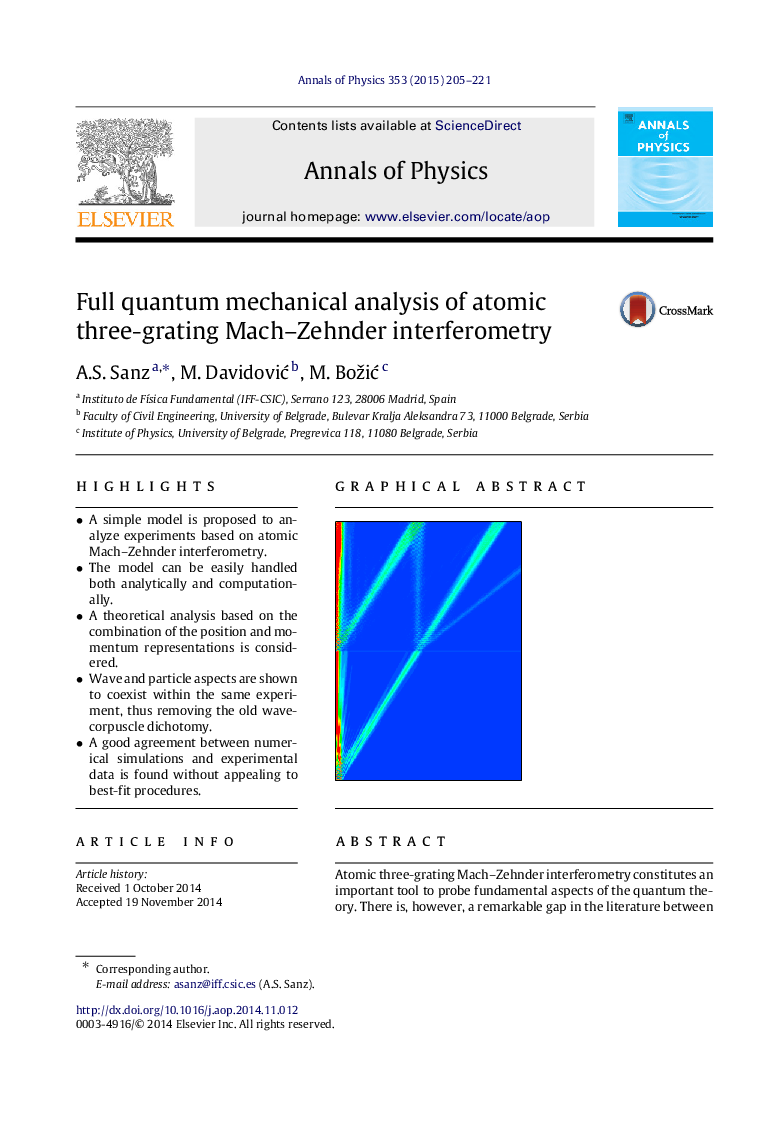| Article ID | Journal | Published Year | Pages | File Type |
|---|---|---|---|---|
| 1856095 | Annals of Physics | 2015 | 17 Pages |
•A simple model is proposed to analyze experiments based on atomic Mach–Zehnder interferometry.•The model can be easily handled both analytically and computationally.•A theoretical analysis based on the combination of the position and momentum representations is considered.•Wave and particle aspects are shown to coexist within the same experiment, thus removing the old wave-corpuscle dichotomy.•A good agreement between numerical simulations and experimental data is found without appealing to best-fit procedures.
Atomic three-grating Mach–Zehnder interferometry constitutes an important tool to probe fundamental aspects of the quantum theory. There is, however, a remarkable gap in the literature between the oversimplified models and robust numerical simulations considered to describe the corresponding experiments. Consequently, the former usually lead to paradoxical scenarios, such as the wave–particle dual behavior of atoms, while the latter make difficult the data analysis in simple terms. Here these issues are tackled by means of a simple grating working model consisting of evenly-spaced Gaussian slits. As is shown, this model suffices to explore and explain such experiments both analytically and numerically, giving a good account of the full atomic journey inside the interferometer, and hence contributing to make less mystic the physics involved. More specifically, it provides a clear and unambiguous picture of the wavefront splitting that takes place inside the interferometer, illustrating how the momentum along each emerging diffraction order is well defined even though the wave function itself still displays a rather complex shape. To this end, the local transverse momentum is also introduced in this context as a reliable analytical tool. The splitting, apart from being a key issue to understand atomic Mach–Zehnder interferometry, also demonstrates at a fundamental level how wave and particle aspects are always present in the experiment, without incurring in any contradiction or interpretive paradox. On the other hand, at a practical level, the generality and versatility of the model and methodology presented, makes them suitable to attack analogous problems in a simple manner after a convenient tuning.
Graphical abstractFigure optionsDownload full-size imageDownload as PowerPoint slide
